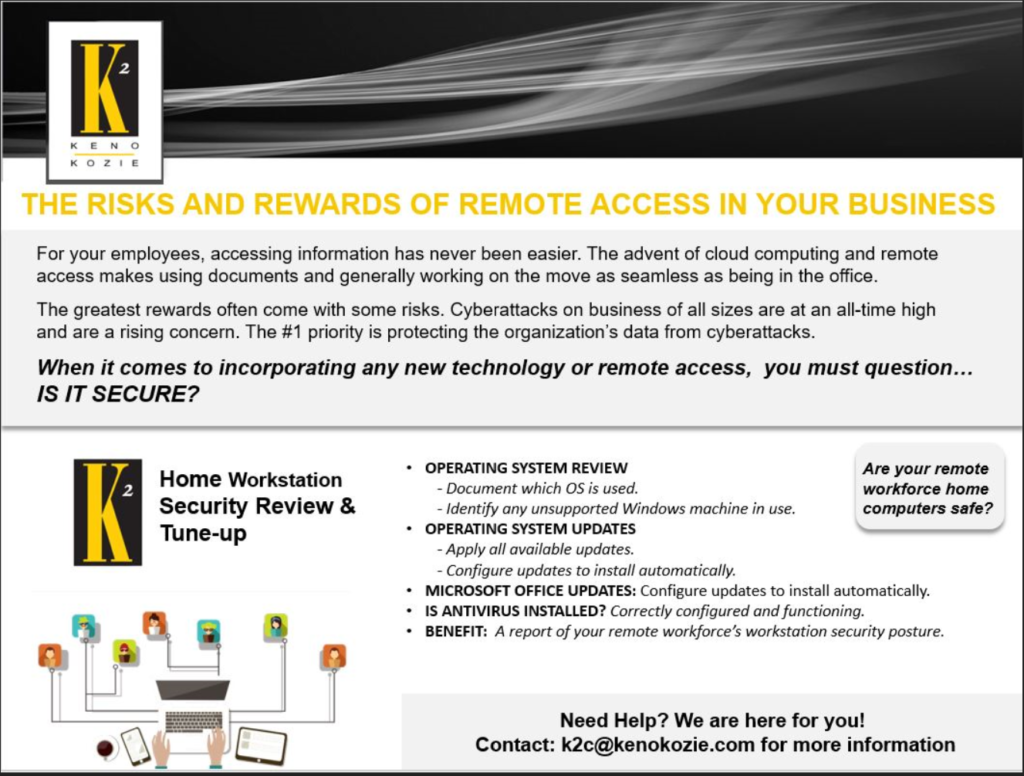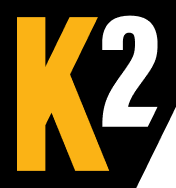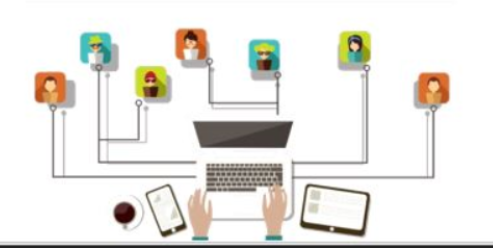COVID-19 has forced many businesses to quickly accommodate their employees working remotely. Having an employee base working away from established offices creates security vulnerabilities that many may not be prepared to mitigate. “Security” as a concept is generally organized under three broad categories of controls – administrative, physical and technical – these are the building blocks for every security policy. Utilizing each of them collectively will help define a straightforward and practical security policy to protect the digital assets of your business.
Technical controls are the hardware and software used to safeguard assets. These controls are typically managed through IT, such as firewalls, antivirus software, intrusion detection and encryption.
Additonal considerations for your home workforce should be verifying you have, or implementing now, technologies for additional security, such as:
- requiring two-factor authentication
- prohibiting access to company systems from public Wi-Fi connections
- identifying how employees can better secure their home network
- requiring security software on employee devices, including antivirus software and mobile device management software and verifying their home computers are up to date
Now more than ever, establishing strong policies and procedures and communicating those often are critical to maintaining the security of your digital assets. Taking the time to review all of your security policies to identify any deficiencies and implement best security practices will help keep your business online and running as well as allow your remote employees to be productive and secure. Keno Kozie’s Home Workstation Security Review & Tune-up program can provide an added level of comfort in protecting your digital assets.
For more information, contact [email protected] or visit k2services.com.


